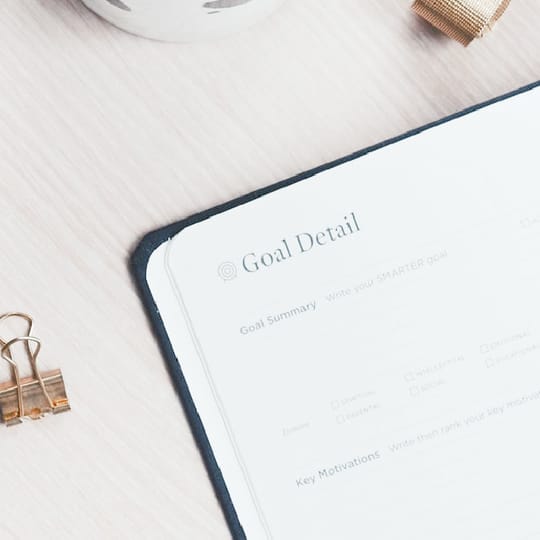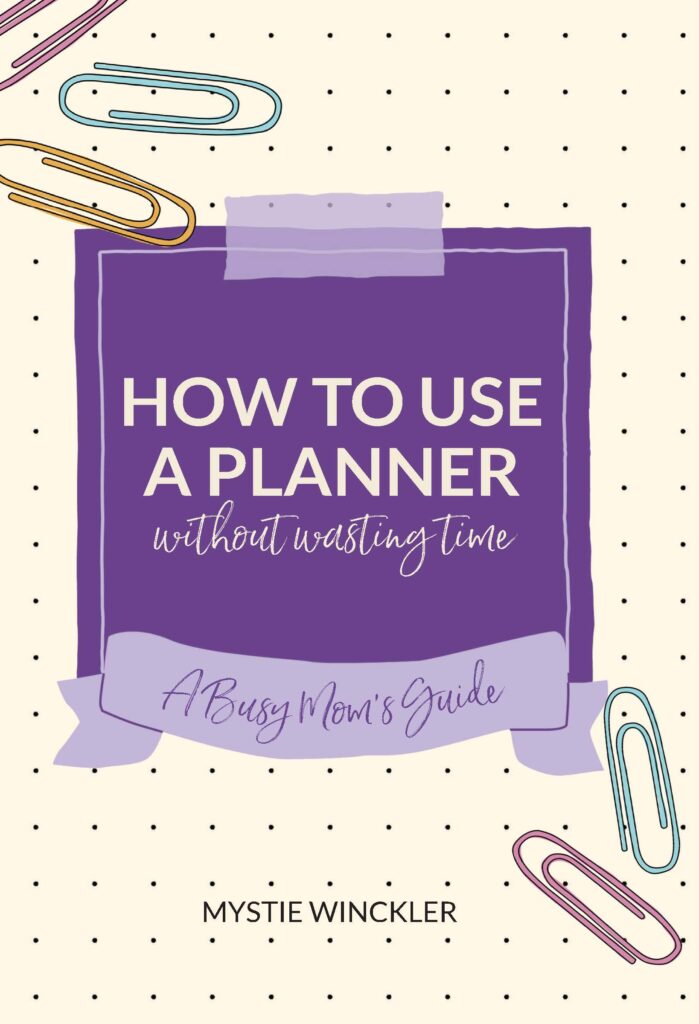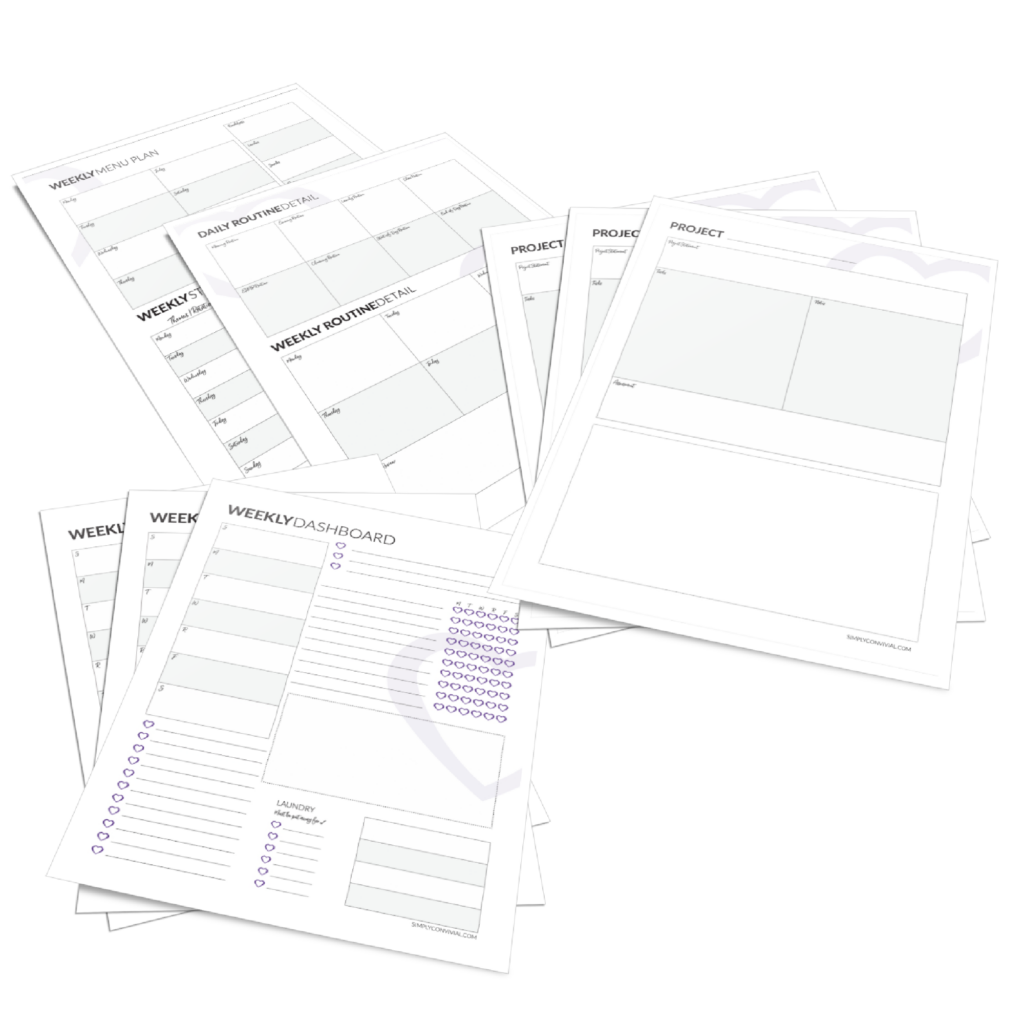
Planning without wasting time
I have spent hundreds of dollars on planners. Large boxes, full of every conceivable office supply product, sat in my closet. I have spent hours – perhaps hours totaling days – setting up apps to help me track what I should be doing when.
Back in the day, when I was a young wife with only babies and toddlers, there was no social media. However, there were forums and blogs. I read and followed several, picking up tips and tricks and ideas that really did help me figure out how to manage myself and a household better.
Do you need a household binder?
One popular practice at the time was a household binder. There were instructions, templates, and examples available online. We could turn a three-ring binder into a household reference, instruction manual, and data center.
I started with a full-size 1 1/2-inch binder. Soon I needed a free hand to carry it because it wouldn’t fit in my purse. In fact, it took up so much space in my diaper bag that there wasn’t hardly room for diapers. After all, the whole point of the binder was that it was always with you. Then you’d have whatever information you might need right at your fingerprints.
Next I created a half-size household binder. It fit in my purse, and I used it much more often than the full size one because it also fit on a handy spot on my kitchen counter.
I made a grocery store price list. It even had an “important numbers” reference page full of phone numbers for emergency services I never used. Writing the sizes of my little boys, I’d cross off old numbers and updating it as they grew and grew. I began honing my master pantry list and menu planning routine that became Simplified Dinners.
The binder was a waste of time…
One day, as I lugged the infant carrier into the grocery cart, rummaged for my binder, and make sure my keys landed in my purse, I directed my toddler to hold onto the side of the cart as I shopped. My binder had to go up in the toddler seat area of the cart, after all, or else I couldn’t reference my price book and be sure I was getting a good deal.
And that was the last day I used my household binder.
It had become just one more hassle in an already full-of-hassle outing, and it was expendable.
How to get on top of your life
I have no regrets about the time I put into making that binder. Over the years I made a few half-hearted attempts at trying less cumbersome iterations. There was the year I had a Palm Pilot that I thought would be the solution, but what effort it saved in size, it ate in time.
We were late to adopt smart phones, but I did have an iPod touch for a number of years that renewed the digital organizer itch. Between those devices I had half-size binder planners, clipboards, post it notes, and index cards.
In all my attempts at creating a complete planning system, I didn’t try a preprinted designer planner until I was nearly 40. I had always hated the thought of having pages in a planner I didn’t use, and I loved the flexibility of adapting my planner to what I wanted to track at the time.
Yet with flexibility comes a curse. I probably spent more hours designing my own planner pages than I ever spent using them. As soon as I didn’t work my planner, I started not by returning to what I had already set up, but by starting from scratch with a new template.
Now, that wasn’t all wasted time. In a lot of ways, putting together and filling out a planner is half the benefit. The exercise of setting up a planner allows us to wrap our heads around what’s going on in our lives and in our heads. We see all the pieces as we write them out and gain clarity in the process.
But if we get only half the benefit of a working planner, it is still an ineffective use of time.
What makes a planner useful & timely
We claim that other half by using it daily. Somehow, it’s the hard part, even though it takes less time and thought. Using a planner boils down to looking at it and updating it as we go.
Why is that the hard part?
Because it takes follow-through. We’re bad at follow-through, and that’s exactly why we need a planner in the first place.
In my new, short book, I walk you through the process of setting up a planner that works without wasting our time. This process works with any purchased planner, self-designed planner, or digital planner. I know it will work not only because of all the planners I’ve set up for myself over the last twenty years, but also because for the last 5 years I’ve walked through the process with hundreds of other ladies and seen dozens of creative applications.
We don’t need the perfect planner to make us organized. We need better habits. We need a streamlined, simple system, not an elaborate and perfect one. Then we need to use it.
Don’t waste time with your planner
As we set up our planner, we’ll also build the habits it takes to follow through not only with our planner but also with our plans. Those habits also must be simple and streamlined so we can do them on less than ideal days. Also, we don’t want to plan on life go smoothly just because we now have a planner.
Planner or not, good habits or not, we will get life curve balls. We will get derailed. We will fall off the bandwagon. We will lose touch with our plans. So we also need to learn how to get back on track quickly after survival mode seasons without feeling like we have to go back to square one.
Planners and great systems do not make life go our way. If that’s our goal, we’ll be perpetually frustrated. We don’t need to make life go according to plan. Instead, we need to help ourselves respond and adapt to life as it unfurls with calm, cheerful goodwill.
A good planner helps us respond well to real life by short-circuiting our overwhelm response – if that’s the approach with which we set it up and use it.
Excerpt from my new book, How to Use a Planner Without Wasting Time, available as kindle and paperback editions on Amazon.



